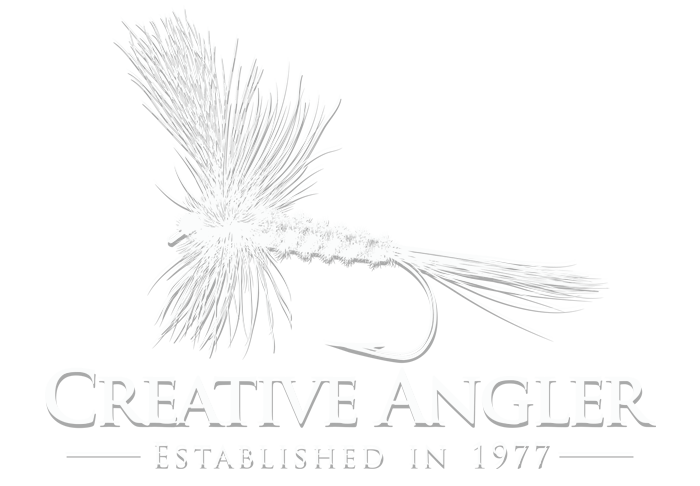



At Creative Angler, we believe in more than just selling quality fly fishing and fly tying gear—we believe in building a community where anglers of all levels can learn, grow, and share their passion for the sport. This wouldn’t be possible without the incredible contributions of our blog content creators.
To everyone who has shared their expertise, tips, and stories on the Creative Angler blog, we extend our deepest gratitude. Your articles inspire fellow anglers, spark curiosity in beginners, and foster a deeper appreciation for the art of fly fishing and tying. From step-by-step tutorials and gear reviews to fishing techniques and tales from the water, your words make a lasting impact on our readers and the fly fishing community as a whole.
Your dedication to crafting thoughtful, informative, and engaging content is what keeps our blog thriving. You are helping to preserve and promote a tradition we all hold dear, and we cannot thank you enough for being an essential part of the Creative Angler family.
At Neosho FFA, students are getting hands-on experience with conservation and fisheries education—one fly at a time! As part of their Conservation Class Fisheries Unit, students at Neosho High School's FFA program (511 S. Neosho Blvd., Neosho, MO) recently had the opportunity to learn fly tying, with the help of Creative Angler, which provided high-quality fly tying kits and materials to support the program.
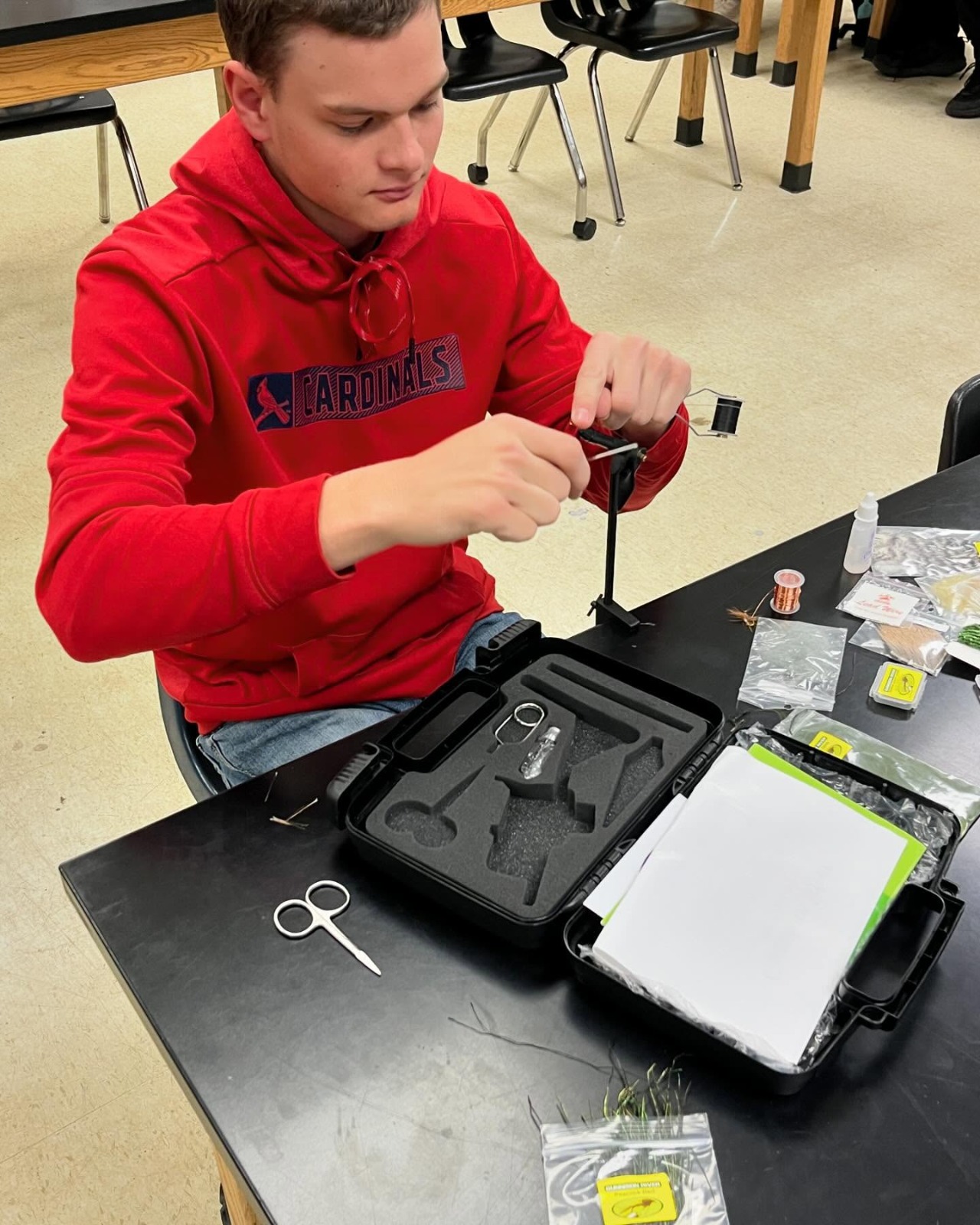
This project was made possible in part through the Future Farmers of America (FFA), which helps students engage in conservation efforts while learning about the importance of protecting natural resources. FFA is more than just agriculture—it’s about leadership, responsibility, and hands-on career skills that prepare students for future opportunities in environmental and natural resource fields.
Hands-On Learning Through Fly Tying
Under the guidance of Kelin Kruse, Agricultural Education/FFA Advisor at Neosho FFA, students explored the intricate craft of fly tying, a skill used in both recreational fishing and fisheries management. Learning to tie flies not only helps students understand aquatic ecosystems and fish feeding behaviors, but it also encourages them to appreciate the importance of conservation in maintaining healthy fish populations.
With the fly tying tools and materials provided by Creative Angler, students had access to some of the best fly tying supplies available, making it easier for them to create realistic, effective flies. The hands-on experience allowed them to see how artificial flies mimic real insects and why responsible fishing practices are crucial to protecting waterways and fish habitats.
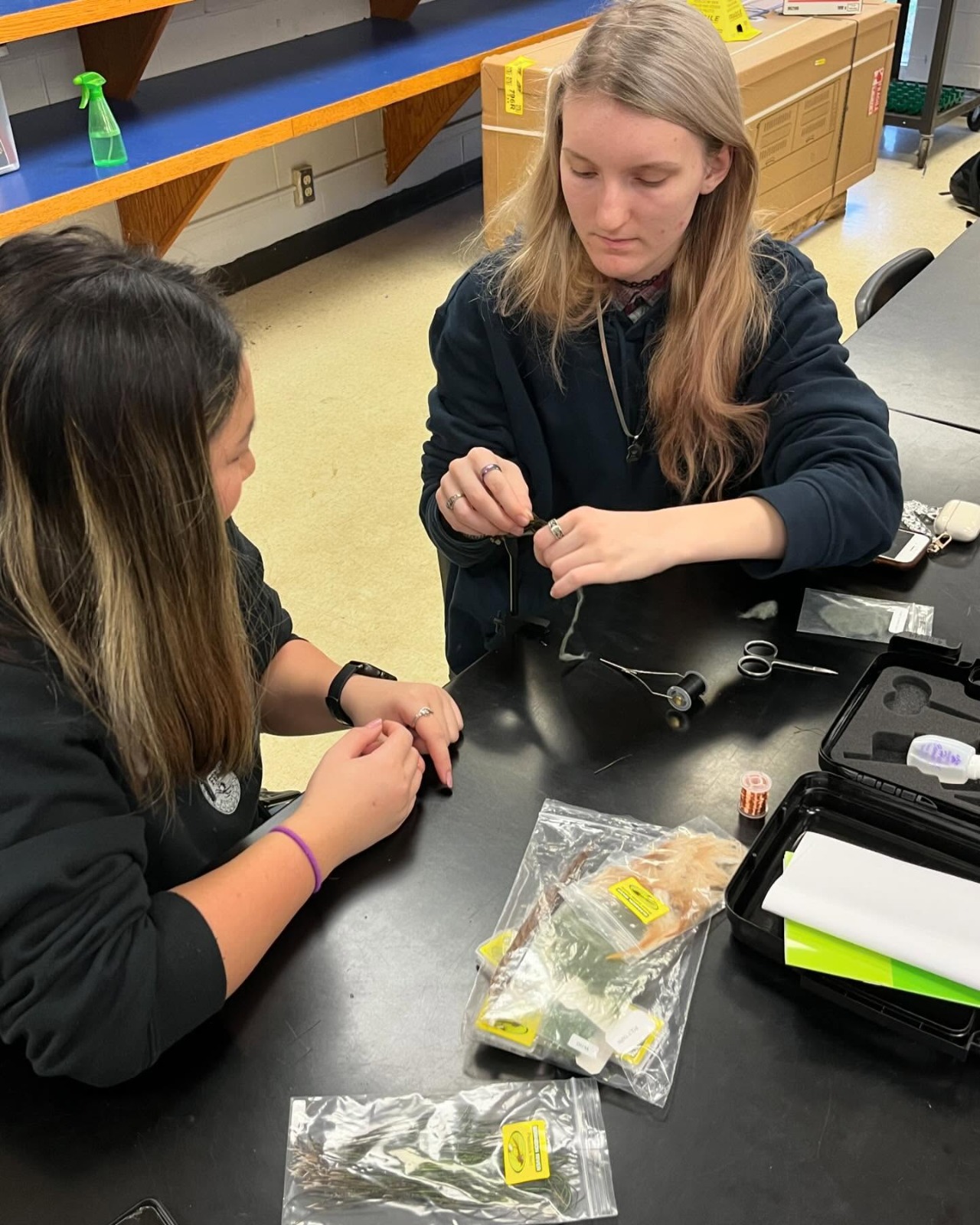
Creative Angler’s Commitment to Education & Conservation
Creative Angler has a long-standing commitment to supporting schools and organizations that promote education, conservation, and outdoor recreation. Whether it’s providing materials for fly tying programs, educational workshops, or youth outreach initiatives, the company is always happy to assist.
“Supporting programs like Neosho FFA’s Conservation Class is important because it introduces students to both the art of fly tying and the science behind fisheries management,” said a representative from Creative Angler. “We believe hands-on education is key to inspiring the next generation of conservationists and outdoor enthusiasts.”
Building Future Conservation Leaders
By blending agricultural education with conservation efforts, Neosho FFA students are gaining valuable skills that can lead to careers in fisheries, wildlife management, and environmental science.
Their participation in fly tying and fisheries education is just one example of how FFA programs help students grow as leaders while making a real impact on environmental sustainability.
With the continued support of organizations like Creative Angler, these students are not only learning new skills but also building a greater appreciation for conservation and the natural world.
For more information on Neosho FFA, visit their location at 511 S. Neosho Blvd., Neosho, MO, or reach out to Kelin Kruse, Agricultural Education/FFA Advisor. If your school or organization is interested in incorporating fly tying into your conservation curriculum, Creative Angler is happy to help!
🎣 Tight lines and conservation in action—one fly at a time!
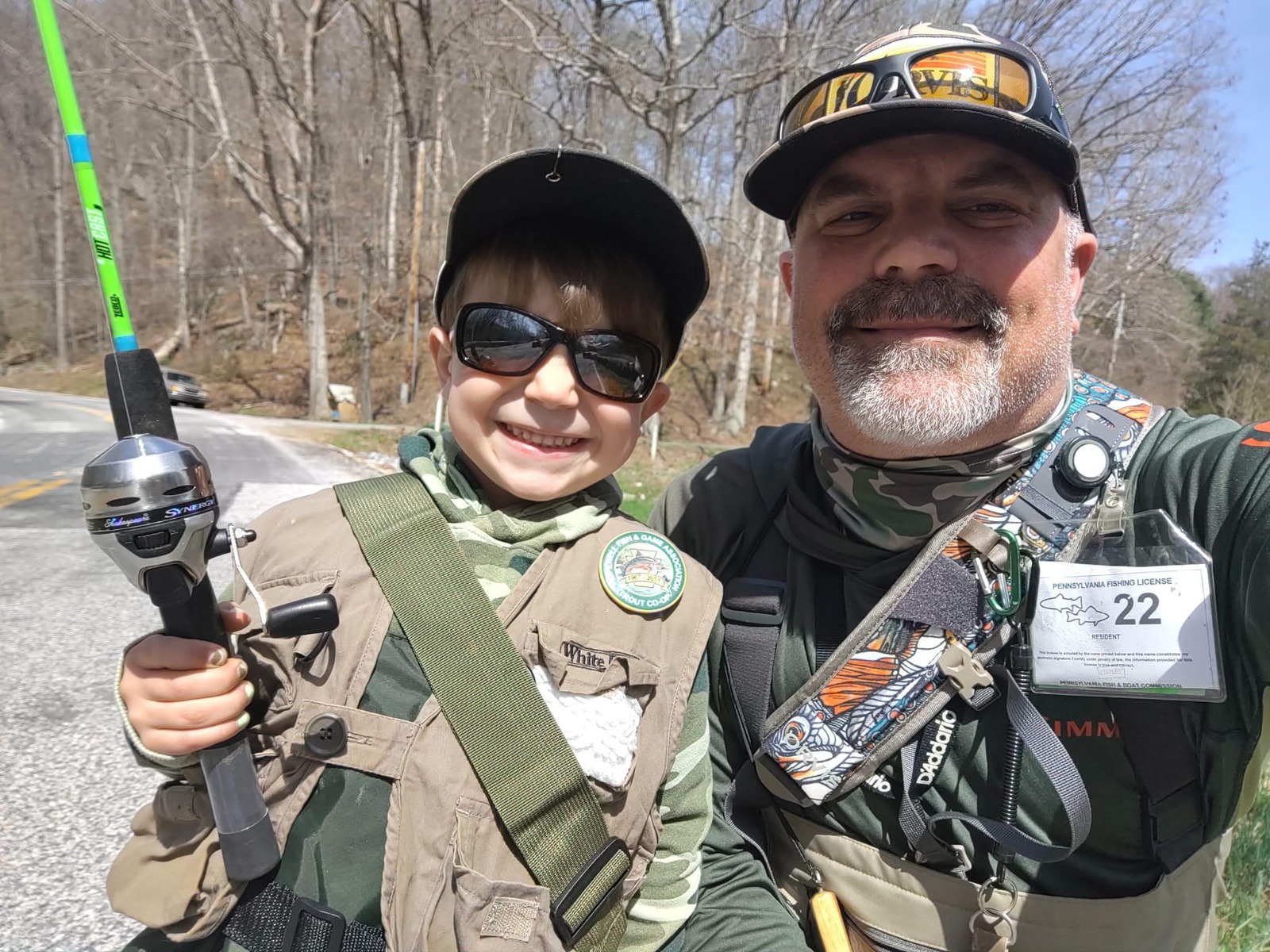
Fishing is more than just a pastime; it is a skill that connects people to nature, fosters patience, and creates lifelong memories. Teaching youngsters the basics of fishing introduces them to these valuable lessons while building a foundation for a sustainable and enjoyable outdoor hobby. Starting with fundamental skills like casting and knot tying not only equips them for fishing but also nurtures essential life skills such as perseverance, problem-solving, and an appreciation for the environment.
Casting: The Gateway to Fishing Success
One of the first and most essential skills in fishing is casting. Learning to cast properly helps youngsters feel a sense of accomplishment as they gain control over where and how they place their bait. Teaching them how to hold a fishing rod, release the line at the right moment, and aim their cast builds hand-eye coordination and fine motor skills.
Casting practice can be fun and engaging, often starting on dry land with simple targets to aim for, such as hula hoops or cones. By mastering casting, children gain the confidence to participate actively in fishing trips and experience the excitement of landing their first fish. Moreover, the repetition of casting teaches them the value of practice and patience, skills they can carry into other areas of life.
-30.jpg)
Tying Basic Knots: Building Confidence and Independence
Once youngsters have learned how to cast, teaching them to tie basic fishing knots is the next step. Knots like the clinch knot, improved clinch knot, or loop knot are fundamental to fishing, ensuring their hook, lure, or swivel stays secure. Knot tying not only helps them understand the practical side of fishing but also instills a sense of responsibility and self-reliance.
Mastering knots requires focus and attention to detail, which encourages problem-solving and persistence. Watching a child successfully tie their first knot often sparks a sense of pride and empowerment, knowing they can prepare their fishing gear independently.
It also lays the groundwork for understanding the importance of preparation and precision, qualities that are applicable in various life situations.
Nurturing a Love for the Outdoors
Introducing children to fishing fosters an early appreciation for the outdoors and the natural world. It provides an opportunity to teach conservation ethics, such as catch-and-release practices, respecting wildlife, and preserving clean waterways. These lessons help youngsters develop a deeper understanding of their role in protecting the environment for future generations.
-38.jpg)
Fishing trips also create a unique setting for family bonding and mentorship. Spending time together on the water strengthens relationships and allows for meaningful conversations, away from the distractions of modern technology. These shared experiences often leave lasting memories and instill a love for outdoor activities that can be passed down through generations.
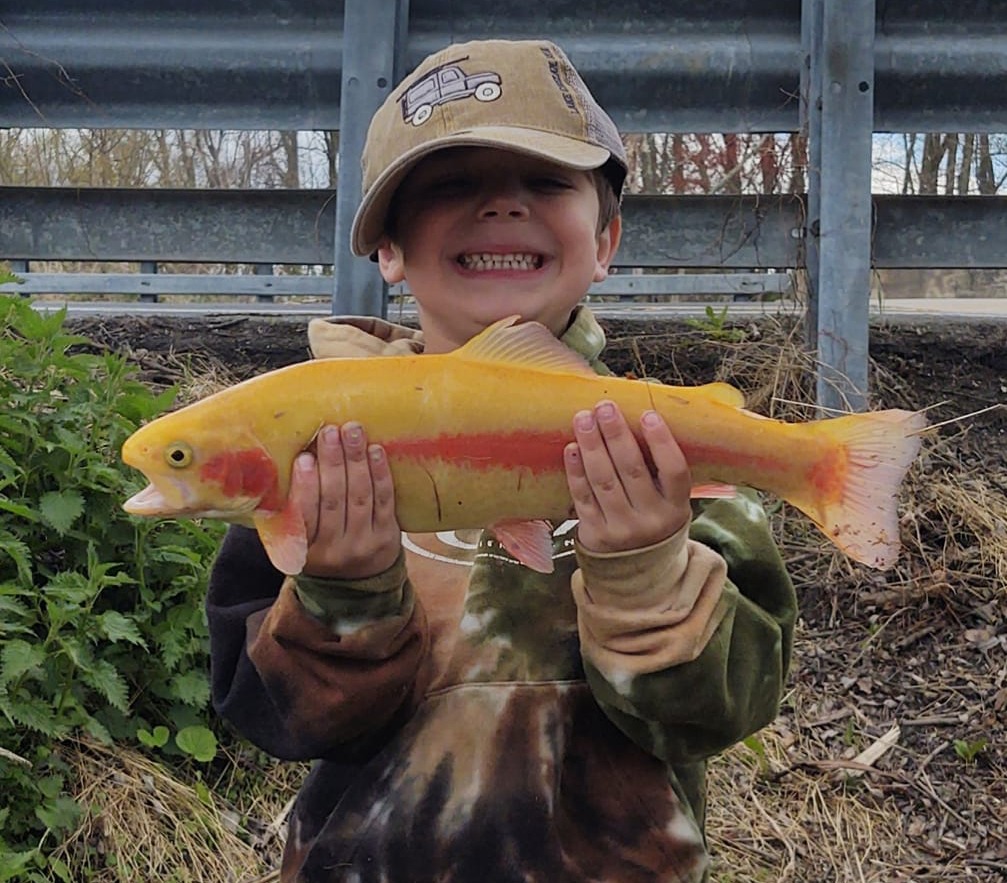
Building Life Skills Through Fishing
Learning to fish teaches more than just technical skills; it builds character. Patience is cultivated as children wait for a bite, resilience grows through the trial-and-error of perfecting their cast or tying a knot, and respect for nature is deepened with each outing. These lessons extend far beyond fishing, shaping youngsters into responsible, thoughtful, and resourceful individuals.
Conclusion
Teaching youngsters the basics of fishing, starting with casting and knot tying, is an investment in their development. It equips them with practical skills, nurtures a love for nature, and provides countless opportunities for personal growth and bonding.
By passing down this timeless activity, we not only share a meaningful tradition but also inspire the next generation to embrace the outdoors and all it has to offer.
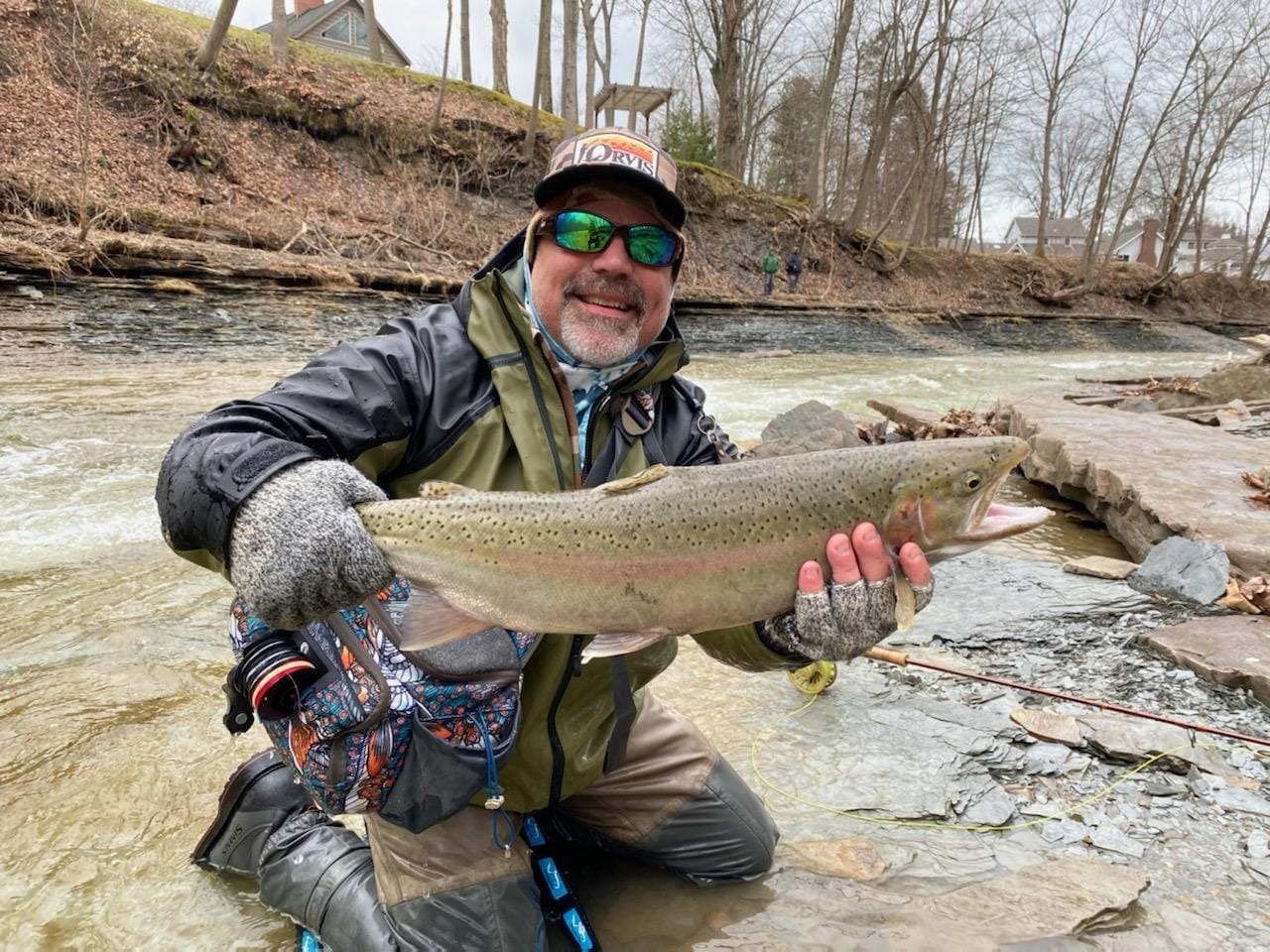
Fly fishing for steelhead in the tributaries of Lake Erie is a bucket-list experience for anglers who crave a challenge and dream of tangling with hard-fighting fish. These chrome warriors, known for their explosive runs and acrobatic jumps, migrate from the depths of Lake Erie into the streams of Western New York, Pennsylvania, and Ohio, offering some of the best freshwater fly fishing in the region.
Among these tributaries, Cattaraugus Creek, affectionately called "The Cat," stands out as a premier destination. Renowned for its healthy steelhead runs and scenic beauty, The Cat draws anglers from across the country.
Whether you’re a seasoned steelhead enthusiast or new to the pursuit, fall, winter, and early spring offer unique opportunities to connect with these incredible fish
When to Go: Seasons of Opportunity
Fall:
The fall months, particularly October and November, are prime time for steelhead fishing. Cooler water temperatures and fresh runs of fish make this season ideal. However, with great fishing comes increased angler pressure. Expect to share the water with plenty of like-minded enthusiasts, especially on popular streams like The Cat. Early mornings or weekdays can help you find less crowded spots.
Winter:
For those willing to brave the cold, winter offers a quieter, more solitary experience. Fewer anglers and slower-moving fish mean you can thoroughly work a pool without competition. Dress warmly, and keep an eye on water conditions, as icy flows can make access tricky.
Early Spring:
As the snow melts and spring rains arrive, steelhead fishing heats up again. These months often bring fresh fish into the streams and reinvigorate holdovers from the winter. Higher water levels can make fishing challenging but also increase your chances of finding aggressive fish.
What to Throw: Fly Selection
Matching the hatch—or in this case, the forage—is critical for success. Steelhead are opportunistic feeders, and presenting the right fly can make all the difference.
• Streamers Mimicking Emerald Shiners:
The emerald shiner is a staple in the diet of Lake Erie steelhead. Streamers that imitate this baitfish in natural colors like silver, white, and olive are highly effective. Stripping a streamer through a deep pool or swinging it across the current can trigger aggressive strikes from steelhead looking for an easy meal.
• Egg Patterns:
During fall and early spring, steelhead key in on eggs, especially in streams with spawning salmon or trout. Brightly colored egg patterns in orange, pink, or chartreuse are essential for any steelheader’s fly box. Drift these flies under an indicator for the best results.
Tips for Success
1. Check the Flows:
Stream conditions can vary widely. Use online resources to monitor flow rates and water clarity before heading out. Optimal flows often mean the difference between a productive day and a frustrating one.
2. Bring the Right Gear:
A 7- to 8-weight fly rod with a sturdy reel and a solid drag system is ideal for handling steelhead. Use floating lines for most presentations, but consider sink tips for deeper pools or fast-moving water.
3. Practice Patience:
Steelhead fishing is as much about persistence as it is about skill. Cover water methodically, adjust your tactics based on conditions, and don’t be afraid to switch flies if you’re not getting bites.
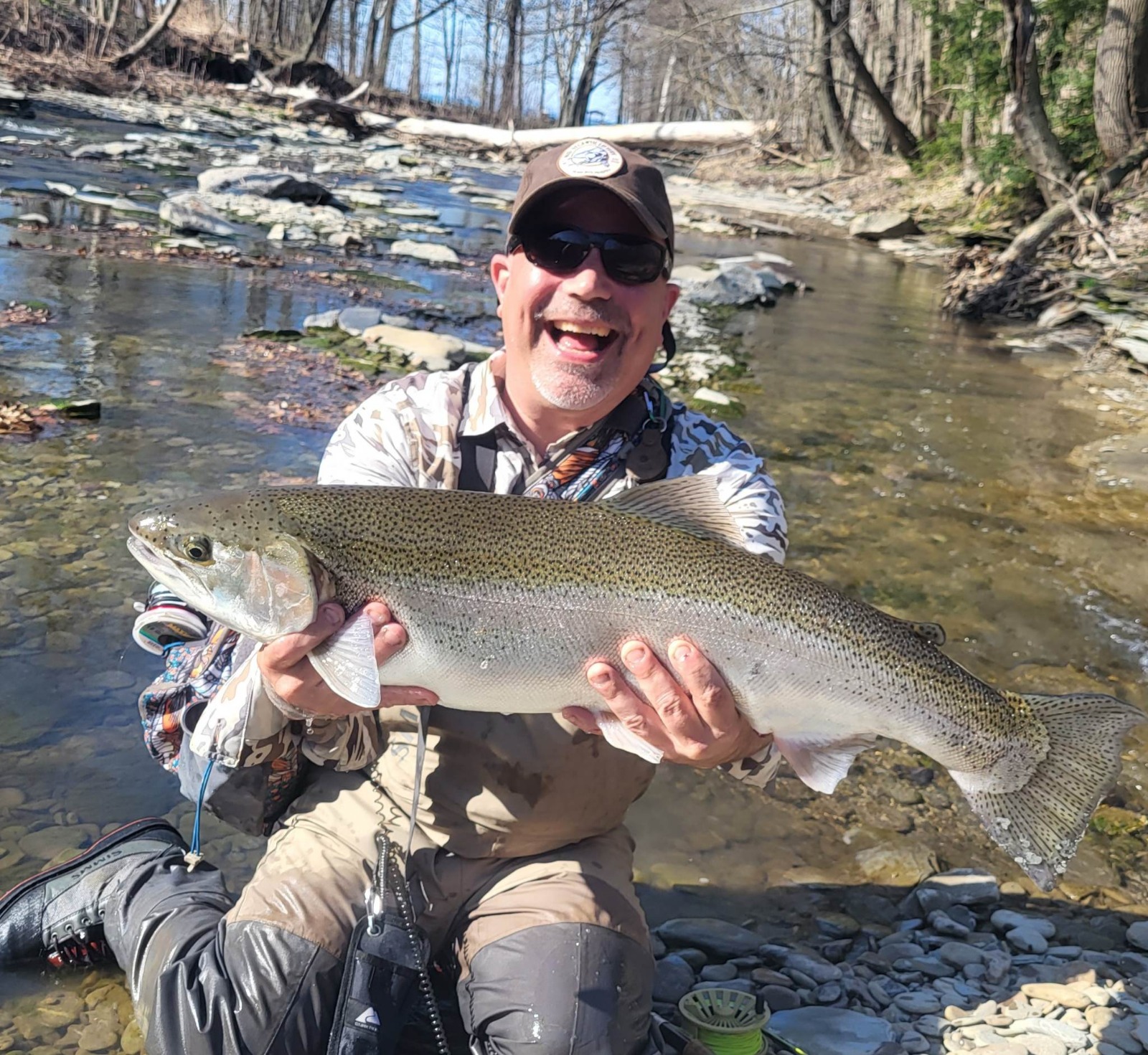
The Experience Matters
Steelhead fishing in Lake Erie’s tributaries is about more than just the catch. It’s about the crisp autumn air, the peaceful quiet of a winter morning, and the hope that every cast might connect you to a fish of a lifetime. Whether you’re standing knee-deep in The Cat’s rushing waters or exploring the tributaries of Pennsylvania and Ohio, the journey is as rewarding as the destination.
So pack your fly box with streamers and egg patterns, layer up for the elements, and head to the tributaries. With a little luck and a lot of persistence, you’ll find yourself hooked into one of the most exhilarating fly fishing experiences North America has to offer.
Tight lines!
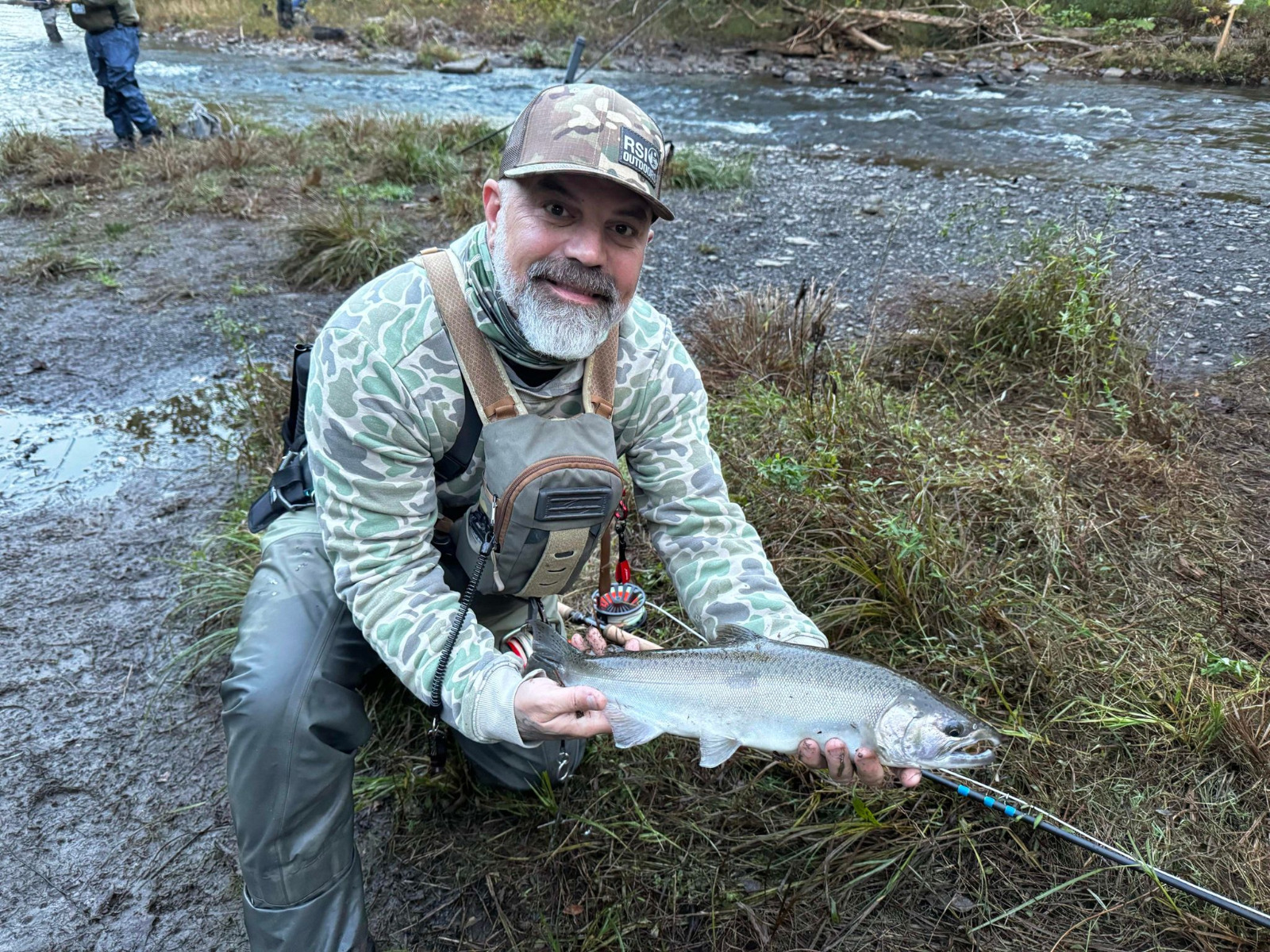
Fly fishing is more than just a hobby; it's a therapeutic experience that benefits both the mind and body. The rhythmic motion of casting, the quiet serenity of the water, and the connection with nature all combine to create a calming atmosphere that helps to reduce stress. Spending hours on the water surrounded by the sights and sounds of nature - whether it's the sound of a river, the rustling of leaves, or the sight of fish breaking the surface has been shown to lower blood pressure and improve mood. For many, it's a form of mindfulness, offering an escape from the fast pace of daily life.
In addition to its mental health benefits, fly fishing also encourages physical activity. Wading through rivers or hiking along streams engages core muscles, improves balance, and increases endurance. Casting the fly rod requires coordination, strength, and precision, making it a great low-impact exercise. Even the act of moving along the riverbank provides cardiovascular benefits, making fly fishing a wonderful way to stay active while immersing yourself in nature.
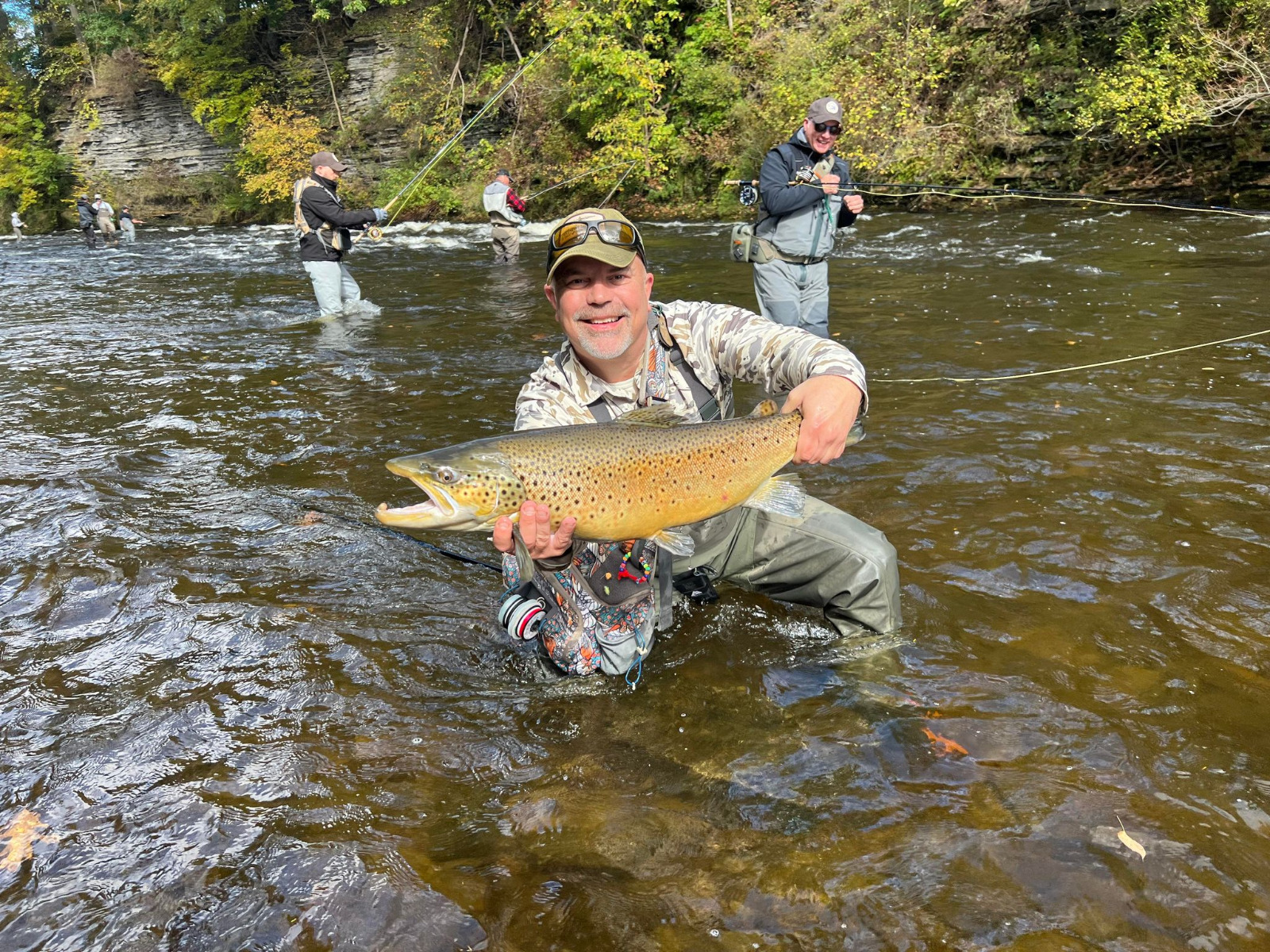
Perhaps one of the most rewarding aspects of fly fishing is the sense of accomplishment it brings. Learning to tie flies, reading the water, and understanding fish behavior takes time and patience, but landing a fish on a fly you tied yourself is a deeply satisfying experience. Fly fishing encourages problem-solving and sharpens focus, keeping the mind engaged and present. It's this blend of physical activity, mental clarity, and a connection to nature that makes fly fishing a truly enriching activity for anyone who picks up a rod.
Copyright 2025 - The Creative Angler - All Rights Reserved.
Site Design and Hosted by
Sunken Treasure Design